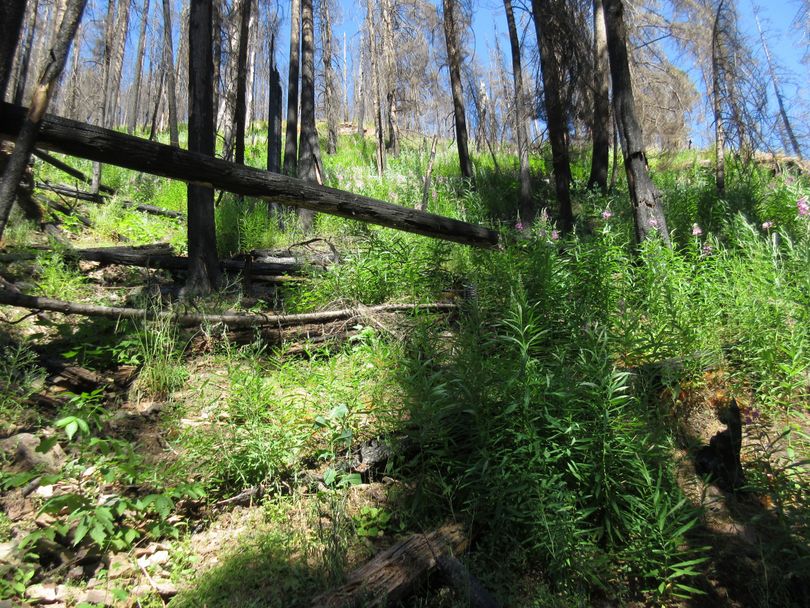St. Joe-area wildfire what doctor ordered for elk

WILDLIFE HABITAT -- While wildfires can be devastating in some cases, a lightning strike in the Snow Peak Wildlife Management area of Unit 9 on the Idaho Panhandle fits the prescription for rejuvenating big-game habitat.
"The Buck Fire had burned over 1,200 acres in the Buck Creek and Papoose Creek area as of Sept. 5," say Laura Wolf, Idaho Fish and Game Department wildlife biologist. "This fire is in an area where IDFG would like to see improvements in elk habitat. In fact, it is an area where we have been working with the U.S. Forest Service to design a prescribed burn project to create nutritious forage for big game."
Nature has stepped in to do some of the job, she says in a report posted by IDFG.
"The Snow Peak Rx Burn project proposes to burn roughly half of the 32,000 acre Snow Peak WMA over the course of 10 years. Wildfires, like the Buck Fire, may count towards burned acreage goals and will provide habitat improvements more quickly and cost effectively than prescribed fires. Plus natural late summer/early fall burns tend to produce great forage for wildlife."
The area is overdue for the habitat renewal to offer elk a better mix of forage and security, she says.
"Snow Peak WMA burned in 1910 and 1926, but the lack of wildfires over the the past 90 years has created dense closed canopy forests and old decadent shrub fields. Deer, elk, and moose can’t find a whole lot to eat in dense forests, although they do like to use those areas for shade during the hot months and for hiding cover.
"Wildfires and controlled burns, on the other hand, can create openings where nutritious grasses, forbs, and shrubs can grow. A mosaic of burned and unburned forest can provide great forage and hiding cover for big game animals.
"Burns can also prevent large catastrophic fires and help in the protection of private timber lands and important conservation areas. Fire, whether a wildfire or a controlled burn isn't the only tool we have to improve wildlife habitat, but in the case of the Buck Fire, wildlife and hunters may reap the benefit for years to come.
Unfortunately, the Buck Fire is forcing a closure of some areas that hunters normally would be using as fall seasons kick into gear.
The Buck Fire closure currently includes the eastern part of Snow Peak WMA and from Junction Ridge to Beaver Peak down to the St Joe River. Road 201 is closed from the Snow Peak Lookout trailhead to Surveyors Ridge. Beaver Creek Road 303 is also closed.
"Hopefully, this short term loss in access will end up being a long term gain for elk hunting on Snow Peak WMA," Wolf says.
- See updates on fire closures on the IDFG hunt planner.
